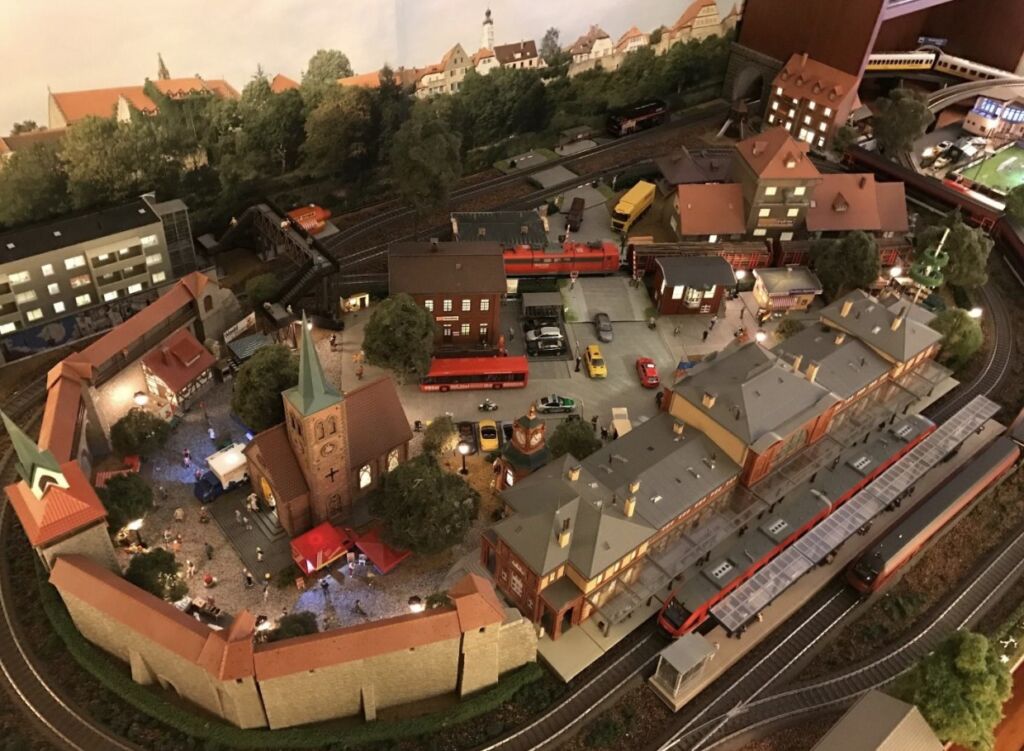Implications for Learning and Assessment of an Interdisciplinary Perspective
When was the last time you encountered an artistic environment in your personal life that was designed to maximize joyful experiences for people of different ages? Have you wondered what goes on behind the scenes to create this joy? I’ll bet that environment included some type of innovation that integrated science, technology, and the arts. This post examines the value of the arts as a vehicle for STEAM – specifically how those artistic environments can be used to enhance the type of experience provided to students in the educational disciplines encompassed within STEAM or STREAM.
STEAM, STREAM, and Teaching and Assessing Competencies Across Disciplines
Using an example below, I take a closer look at the educational value of complex artistic environments and examine the technical scientific work behind the scenes. I then discuss what can be learned about the learning and assessment experiences that could be generated for learners in K-12 settings. My perspective today is guided by the framework of science, technology, engineering, arts, and mathematics (STEAM) or, even more expansively, STREAM, which includes reading and writing as targeted competencies. I offer this example as one inspiration for thinking about how we teach and assess competencies that have cross-disciplinary value and as a way to share some resources along the way.
Motivation for Integration of Arts and Sciences
In my career as an educational measurement specialist, I have commonly observed an overly simplistic separation of work in STEM and various artistic disciplines or endeavors. Similarly, the Next Generation Science Standards focus predominantly on the natural sciences, although it is coupled with engineering as an important complementary area of work. As noted in the introductory chapter of the 2012 A Framework for K-12 Science Education:
The committee’s vision takes into account two major goals for K-12 science education: (1) educating all students in science and engineering and (2) providing the foundational knowledge for those who will become the scientists, engineers, technologists, and technicians of the future.
The authors neither include an explicit focus on the social, behavioral, and economic sciences nor are connections between the visual or performing arts made explicitly, not even through examples.
The more that arts and science are separated in curricula and assessments, the more it can be difficult to have conversations about the role of “the arts” and “artistic engagement” in K-12 education. This situation is especially troublesome in the modern world where various technologies and associated requirements for digital literacies have foundationally transformed traditional artistic disciplines. As the fields of educational assessment and measurement are evolving to embrace more complex competencies, activities, data, analyses, and uses, in contexts ranging from K-12 classrooms to international educational surveys, it is valuable to revisit these connections to STREAM frameworks and programs. Building such bridges can have wide-ranging implications for the design and implementation of curricula, assessments, and teacher professional development.
We can learn a lot from looking at environments that appear to foreground artistic expression and are heavily interdisciplinary to learn more deeply about the various contributing scientific work streams. Having learners engage with such environments as the entry point leads naturally to complex tasks and projects that foster the development of complex competencies that are critical in the modern world (e.g., collaborative problem-solving, creative thinking, information technological skills, and socio-emotional learning).
Today’s Example: The Miniature Wunderland
I have an affinity for model trains, especially European ones. They bring back memories from Germany, are themselves amazing feats of engineering, and have allowed me to use a variety of artistic skills in building landscapes and dioramas. Here is an example of a diorama I once created:

My example of an artistic environment with deep scientific innovation is accordingly the Miniature Wunderland in Hamburg, Germany where I am from. It started 25 years ago as an idea that two brothers had when they were inspired by vacation travels in Austria. It is now consistently the biggest tourist attraction in Germany and the largest miniature world in the world. Walking through the multi-story building in the old warehouse district will leave you in awe of all kinds of playful and scientific design choices that the developers have made in terms of layout, lighting, automation, and interactive displays. For all of the beauty and playfulness that visitors see there is a lot of technology and scientific advancement behind the scenes.
Here are a few examples:
- Technologically, the team has invented new self-driving software and technologies for trains, street cars, race cars, boats, and airplanes, controlled by proprietary management software, new sound systems, as well as new solutions for wiring for lighting, interactive displays, and diorama design, to name but a few. Just take a look at the racetrack design for Monte Carlo within the Wunderland, which illustrates the opportunities for women in STEAM that the organization provides.
- Economically, it is a scaled business that has to constantly engage in fundraising, human capital management, compliance with building and property regulations, marketing, social media presence, and restaurant management, to name but a few.
- Structurally, it has adopted a collaborative, interdisciplinary lab environment in which artistic creativity, diversity, and colorfulness, in all senses of the word, are welcomed and nurtured.
- Socially, it has created valuable initiatives such as hiring people through performance activities without requiring specific degrees, making the environment accessible for free to people who cannot afford it, supporting a variety of social causes that try to do good for people in need more generally, and offering internship-like experiences to K-12 students, and so on.
If this kind of environment exists in the real world as an exemplar of how things can exist outside common molds, how can we leverage their key lessons for K-12 learning and assessment?
Artistic Environments Offer Opportunities in a Variety of Areas
The answer to the previous question depends strongly on the framework or lens that one applies to the Miniature Wunderland environment. Different learners have different interests, styles, and dispositions and even focusing on this environment will certainly not engage every learner equally.
From an empowerment perspective, simply showcasing and foregrounding creative use cases like this and encouraging learners to reflect on and discover their potential can be powerful, which may encourage them to seek out nontraditional extracurricular activities and even career pathways that build on their interests. Many of us know stories of people in our lives – possibly ourselves – who did not know that certain jobs even existed, which does limit the way we engage with the world. These “unusual” jobs typically require formal training but at least they provide ideas for how the acquired skills can be leveraged in ways that sustain engagement to shape career pathways throughout life. Frameworks like career-connected represent meaningful bridges.
From a structural perspective, examples like the Miniature Wunderland make a very strong case for interdisciplinary, collaborative learning around performance-based tasks that integrate diverse scientific disciplines as advocated by work in areas such as project-based learning, deeper learning, personalized learning, maker spaces / education, sociocognitive assessment, and competency-based education – to name but a few relevant ones – they encourage.
From an assessment perspective, they inspire us to think outside the box and provide more flexibility to learners and educators for the tasks that they design and the ways they identify evidence about individual and collaborative contributions in projects. In subsequent posts, I will explore current research, practices, and communities that illustrate how assessment designers can strengthen STREAM connections. Here are some sample considerations for K-12 educators and assessment specialists at the district level to strengthen STREAM connections across disciplinary boundaries should this be of local value:
- Target competencies, practices, and habits of mind related to STREAM in guiding frameworks such as portraits of graduates to nudge school designs towards the implementation of suitable curriculum, professional development, and assessment solutions
- Whenever appropriate, make explicit the importance of integrated STREAM perspectives when developing strategic roadmaps, mission statements, curricula, and professional development materials
- Foster a culture of interdisciplinary engagement in your school or district to actively look for opportunities for teaching and assessing STREAM competencies in an integrated manner across disciplinary boundaries
- Invite local community members in your district to present suitable STREAM problems for project-based activities to students in realistic contexts and have them co-design rubrics and evaluation processes that value the application of STREAM competencies
- As a critical consumer of diverse assessment information – some locally developed, some provided by vendors, and some mandated by the state – review the evidence that each can provide about STREAM competencies and use the resulting data carefully in conjunction to manage school effectiveness
- Collaborate with organizations that provide practical but research-backed solutions for learning, assessment, and accountability systems that reflect STREAM considerations whenever appropriate, even if a different guiding framework is formally named
These are just a few examples for illustration given space limitations and various districts across the country are engaging in this work at some stage of maturation of course. I hope to have illustrated that there are many valuable reasons for considering a STREAM perspective, especially during a time when innovations in assessment and accountability systems are nationally desired, experimented with, and evaluated. What powerful examples of curricula, programs, and assessments are you involved in that can provide inspiration to those working on in K-12 innovation spaces?
The post Full STEAM Ahead on Scientific Innovations in Artistic Environments appeared first on Center for Assessment.


